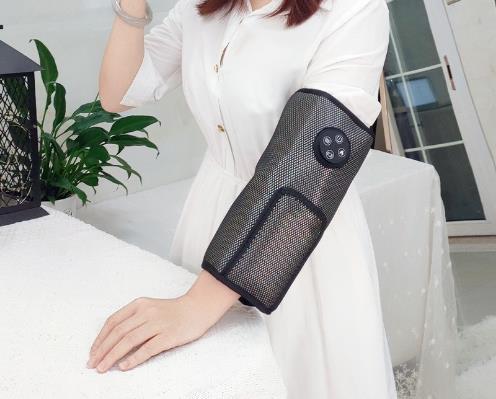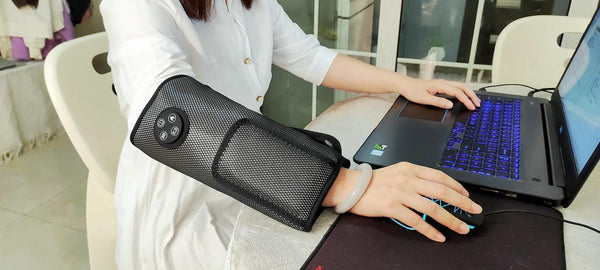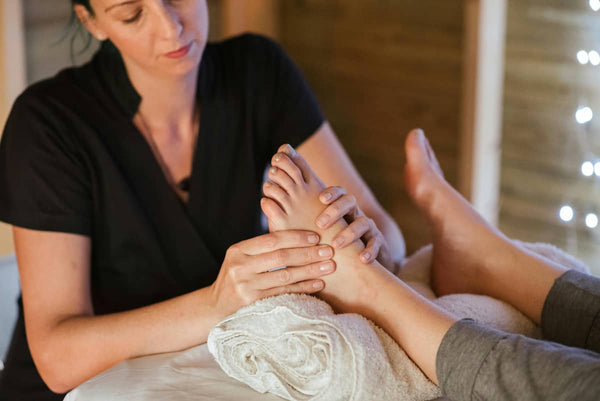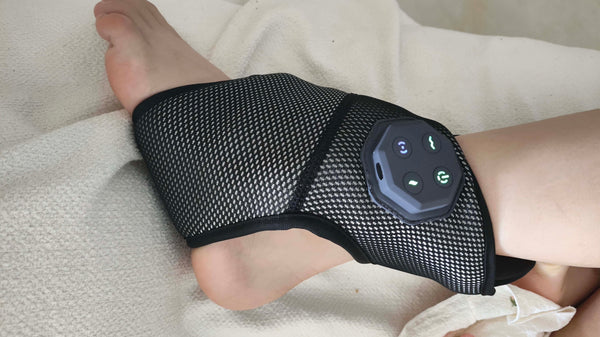
As a wellness coach, one of the most common complaints I hear from my clients, especially those with desk jobs, revolves around that persistent, nagging ache in the neck, shoulders, and lower back. You’ve probably seen them everywhere: sleek, powerful massage devices buzzing away on social media or in the hands of a colleague. The big question is, are they just a high-tech trend, or can a portable massager genuinely offer relief from the strain of office life? It's a valid question, and many wonder if a massager electric is a worthwhile investment.
Let's be honest, the idea of erasing a day's worth of tension in minutes is incredibly appealing. But before you invest, it's important to understand what these tools can—and can't—do. A quality massager electric can feel amazing, but its true utility is nuanced. In this guide, we'll dive into the science, weigh the pros and cons, and explore how a massager electric fits into a bigger picture of well-being, helping you make a choice that truly supports your health.
The Ache of the Desk Job: What Happens to Your Muscles?
Have you ever stopped to think about what's actually happening to your body during an eight-hour day at the computer? Sitting is often called "the new smoking" for a reason. When you're locked in that seated position, your body adapts in ways that create discomfort. Your hip flexors shorten and tighten, your shoulders hunch forward, and the muscles in your neck and upper back become overstretched and strained. This is a classic pattern of muscle imbalance that many office workers experience, creating a clear use-case for a helpful massager electric.
This prolonged posture leads to the development of painful muscle knots, or myofascial trigger points. These are essentially tiny, contracted areas within a muscle that can cause pain both at the site and in other parts of the body. Your lower back might ache because your glutes have "turned off," forcing other muscles to compensate. It's this complex web of tension and compensation that a device like a massager electric aims to address, providing targeted relief where you need it most.
How Percussive Therapy Works: The Science of a Massage Gun
Most of the popular handheld massage devices on the market use a technique called percussive therapy. The function of this type of massager electric is straightforward: imagine a tiny, powerful jackhammer working to soften up a stiff muscle. The head of the device rapidly and repeatedly strikes the muscle tissue, creating intense vibrations. This action does a few key things. First, it dramatically increases blood flow to the targeted area, bringing fresh oxygen and nutrients that help the muscle relax and repair. This is a primary benefit of any good massager electric.
Secondly, that intense percussion helps to break the pain-spasm cycle. The rapid input can override pain signals being sent to your brain, providing a sense of immediate relief. A deep tissue massager also helps to release those tight muscle knots by encouraging the contracted fibers to let go. On a deeper level, it stimulates nerve receptors called mechanoreceptors, which can help down-regulate an overactive nervous system, promoting relaxation. This is why using a powerful massager electric can feel so instantly gratifying after a stressful day. Many users find this specific feature to be the main draw.
The Real Benefits (and Limits) of a Deep Tissue Massager
So, does it work? Yes, but it's crucial to understand its role. The debate around these devices highlights different perspectives on muscle recovery. Thinking about these viewpoints will help you set realistic expectations for what a portable massager can do. A modern massager electric is a potent tool, but it has defined limits you should be aware of.
- Common View: Great for Temporary Relief. This is the most widely accepted benefit. A good massager electric is fantastic for providing immediate, temporary relief from muscle stiffness and soreness. It feels great, reduces tension, and can make you feel looser and more comfortable in the short term.
- The Limit: It’s a Symptom Manager, Not a Cure. This is the other side of the coin. While a deep tissue massager can ease the pain, it doesn't fix the root cause—your posture or ergonomic setup. If you don't address the underlying issues, that neck ache will keep coming back. The massager electric is a treatment, not a cure.
- Experienced Runner's View: Different Tools for Different Jobs. Many experienced athletes argue that for true, lasting fascial release, other tools are more effective. They believe that foam rollers and lacrosse balls, which allow for sustained, deep pressure, are better for breaking up stubborn adhesions. A massage gun's rapid percussion is a different sensation with a different purpose.
Beyond the Gun: Are Other Methods Better?
 This brings us to a minority opinion that, in my experience, is really, really important: tools are secondary to habits. A fancy massager electric is a wonderful supplement, but it should never be a substitute for the foundational pillars of muscle health. If you're looking for a long-term solution to desk-related pain, these are the areas that deserve your primary focus, well beyond any single device.
This brings us to a minority opinion that, in my experience, is really, really important: tools are secondary to habits. A fancy massager electric is a wonderful supplement, but it should never be a substitute for the foundational pillars of muscle health. If you're looking for a long-term solution to desk-related pain, these are the areas that deserve your primary focus, well beyond any single device.
First, let's talk about those other tools. Foam rollers and lacrosse balls are fantastic because they force you to be an active participant. You use your body weight to apply sustained pressure, which can be more effective for releasing deep, chronic knots. More importantly, they teach you about your own body. Secondly, and most critically, are movement and hydration. Simple dynamic stretches before you start your workday and taking 2-minute "movement breaks" every hour can do more to prevent stiffness than 10 minutes with even the best massager electric at the end of the day. Hydration is also key, as dehydrated muscles are tight, sticky muscles.
How to Use a Portable Massager Safely and Effectively
If you decide a massage gun is right for you, using it correctly is key to getting the benefits without causing harm. Think of your massager electric as a powerful tool that requires a gentle hand. Here’s a simple, step-by-step approach to get you started for optimal results.
- Step 1: Choose the Right Attachment. Most massage devices come with multiple heads. Use the large, flat, or round head for big muscle groups like your quads or back. Use the smaller, more pointed "bullet" head to gently work on a specific knot.
- Step 2: Start Low and Slow. Don't crank the speed to the maximum setting right away. Start on the lowest setting to let your muscles warm up. You can gradually increase the speed of your massager electric if it feels comfortable.
-
Step 3: "Float" the Device. You don't need to apply a lot of pressure. Let the percussive action of the gun do the work. Simply "float" the head of the portable massager over the muscle belly. Pressing too hard can cause the muscle to tense up.
- Step 4: Keep It Moving. Avoid holding the massager in one spot for too long. Gently sweep it over the length of the muscle for 30-60 seconds. Lingering on a single spot can irritate the tissue or even bruise it.
-
Step 5: Avoid Bones, Nerves, and Joints. This is the most important safety rule. Never use a massage gun directly on your spine, your kneecap, or the front of your neck. Keep it on the soft, fleshy part of the muscle.
So, back to our original question: is a massager electric useful for the aches and pains of a desk job? The answer is a resounding yes… with an asterisk. It is an excellent tool for managing the daily symptoms of muscle tightness, providing immediate relief, and promoting relaxation. A quality massager electric can absolutely be a valuable part of your wellness routine.
However, they are not a magic wand. True, lasting relief comes from addressing the root cause of your pain. Think of your deep tissue massager as one important tool in your wellness toolkit, but not the entire workshop. Combine its use with regular movement, mindful stretching, and an ergonomic workspace, and you'll have a powerful, holistic strategy for feeling your best. This balanced approach is key to getting the most from your massager electric.
Frequently Asked Questions
Are massage machines good for you?
Yes, when used correctly on muscle tissue, massage machines can be very good for you. They help increase blood flow, relieve muscle tension, and reduce day-to-day soreness. The key is to use them safely, avoiding bones, joints, major nerves, or existing injuries. They are a great tool for managing the muscular symptoms of a sedentary lifestyle.
Do massage machines work?
Absolutely. Massage machines work by using percussive or vibration therapy to stimulate muscle tissue. This process helps to temporarily alleviate pain, break up muscle knots, and increase circulation to the area. While they are effective at providing relief, their success as a long-term solution is greatest when paired with addressing the root causes of pain, such as poor posture or lack of movement.
Is massage machine good for health?
For general muscle health, a massage machine can be a positive addition to your wellness routine. A good massager electric can help manage stress, improve relaxation, and maintain muscle pliability. It's a beneficial tool for counteracting the physical effects of stress and inactivity. However, overall health is multifaceted and also requires a foundation of regular physical activity, proper nutrition, and good ergonomics.
This reply is generated based on currently verifiable public information. It is recommended to cross-check key content with authoritative sources.




0 comments